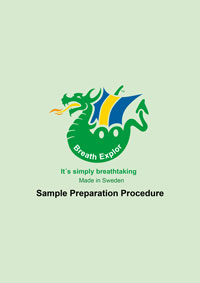Exhaled breath constitutes an attractive specimen for forensic and medical investigations. Compared to alternative methods, exhaled breath is always readily accessible, and sampling is both convenient for the donor and non-invasive in nature. Exhaled breath may contain as many detectable components as blood or urine. There are already several FDA approved breath-related tests, but for volatile compounds.
Exhaled breath contains both volatile and non-volatile compounds. The part that contains the non-volatile components is present in the form of aerosol particles. Particles of sizes about 1 μm in diameter, most of them <1 μm in diameter, are always present in human breath. These particles are formed during inhalation, when the small airways re-open and the lining fluid bursts. The particles consist of surfactant, a liquid that is secreted in the distal airways and is crucial for lung function. The exact surfactant composition is functionally important and complex, and consists of lipids, mainly phospholipids, and proteins.





